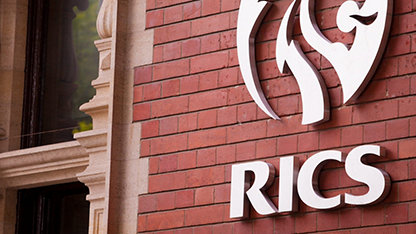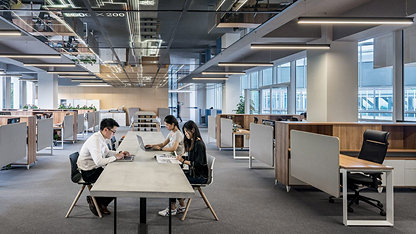In the days leading up to, and then following the UK government’s advice to shift to remote working, many business leaders sent out updates to clients, informing them of the change. I drafted one for the company that I led at the time and reflected on the appropriate message to put out at what was a difficult time for many. I opted for something relatively concise, explaining that we had moved to remote working and that the business would continue uninterrupted.
I read some messages by other companies that took a different approach and proudly stated that it was ‘business as usual’, which I personally thought was the wrong approach for two key reasons. First, at a time when many in the sector had been furloughed, lost their job, or taken pay cuts, and everyone faces an uncertain future, I thought this was insensitive. Second, there was nothing usual about the situation, even for businesses that had adopted working remotely long before lockdown. The landscape for all had changed and going forward, when we get through this, the way we work will be different as a result of the global crisis we have experienced.
This prompted me to look back through history, and what I found was a theory that invention and innovation tends to increase during periods of global crisis.
Joseph Schumpeter, one of the most influential economists of the early 20th century, stated that crises were ‘seedbeds of innovation and entrepreneurship’ and that ‘innovations developed during crises generate the gales of creative destruction that launch new technologies, remake existing industries, and give birth to entirely new ones — setting in motion new rounds of economic growth.’
Some of the change we are currently experiencing is an acceleration of what was already happening – working from home, flexible work practices, online shopping and banking, cashless payments – the only difference is that the speed of this change has been turbocharged. It was not a question of if but when the transition would happen.
“Some of the change we are currently experiencing is an acceleration of what was already happening; the only difference is that the speed of this change has been turbocharged. ”
Other changes have occurred as a direct response to COVID-19, such as distancing sensors on construction sites, and digital tracing of viral transmission, for example. No doubt further innovation and invention will emerge in the immediate future.
A good historical example of this was in 1943 with the invention of the world's first electronic computer, built and used for the remainder of the war at Bletchley Park. The work at Bletchley is estimated to have shortened the war by two to four years.
The need to accelerate change
A focused look at the built environment highlights that the pace of change within the sector has been slow. In Reinventing construction through a productivity revolution, a report published by McKinsey Global Institute in February 2107, the authors state that ‘construction is among the least digitised sectors in the world, according to MGI’s digitization index. In the United States, construction comes second to last, and in Europe it is in last position on the index.’
Although a lot of great work has taken place in recent years, we still have much more to do. A recent survey of over 350 RICS members on technology highlighted that less than 50 per cent feel they have the skills to fully embrace technology, just over 50 per cent feel they have a good understanding of technology and work for companies who have a digital strategy in place. On a positive note, 98 per cent see technology as an opportunity. In summary, the acceptance of technology is there, the skills and adoption are not.
Over the last few months, many businesses in the built environment sector have had to give additional focus to three key operational issues:
Technology infrastructure
Can staff operate effectively while work remotely? Do they have access to IT hardware to do their job, and is there adequate security and broadband in place? Staff who normally work from home have had time to establish a home office. In contrast, the speed at which lockdown was announced made it difficult for some companies to ensure they maintained business continuity, leading to disruption and loss of earnings.
Support issues
Working from home has both positives and negatives. I have spoken to many people who find working from home uncomfortable and they struggle with the sense of isolation, which can create anxiety as well. There are wider issues than this – all of which needs to be considered by businesses and steps taken to support staff. Businesses are responding in lots of creative ways.
Digital solutions to deliver services
I have spoken to many business leaders within the built environment over the last few months to get a sense of how they are coping and responding to requests for advice. What is clear is the differences that exist across the sector on digitisation.
Those with a digital strategy in place and existing established technology spoke positively about their ability to respond to the challenges. Others who operate more traditionally found it more challenging and felt in retrospect that they possibly should have done something sooner. Everyone I spoke to looked at this period as a huge learning curve that has pushed them to reposition the business so that they can emerge stronger in the future. They were clear on the need to either review their existing digital strategy or create one where it was not in place.
The key points, that I would suggest should be considered as part of a digital strategy, are:
- It’s not purely about IT or involving just a few staff, it is something that should be at the core of any business, with all staff aware and engaged.
- It must focus on business transformation and the direction of travel, start with the end in mind and everything that needs to be in place to make this happen.
- Look to maximise the value of the services you provide to your clients. This in turn helps you create long-term relationships and grow your business. Ask customers what they would like – the best surveying solutions I created in my career were informed by conversations with clients regarding their processes and how they use or would like to use data.
- Improve efficiency and productivity, while at the same time aiming to improve quality.
- Increase the value and usability of data, by providing it in an easily digestible format that enable evidence-based decisions to be made and explore the benefit of business intelligence.
- Ensure you have technology in place that can maximise your ability to deliver the above, to help with this produce a scope of what you require and consider using the MoSCoW (Must have, Should have, Could have, Won’t have) prioritisation method to help you with this.
- Once you have the technology in place, commit time to training and accept mistakes will happen. If you do not do this the business will struggle.
- Operate with flexibility and respond swiftly.
- Always review and look for better ways to do things. Improvement never ends.
In the UK, we are starting to see surveyors returning to sites. It is still too early to know with any confidence what the precise economic impact of COVID-19 will be and the length of time it will take to recover. What is clear is that the adoption of technology by surveyors is more critical than ever, the pace of change has significantly increased and there will not be a return to ‘business as usual’.
- Anthony Walker FRICS is a member of the RICS UK and Ireland World Regional Board and the RICS Built Environment Journal building surveying editorial advisory group, email@anthonywalker.co.uk














